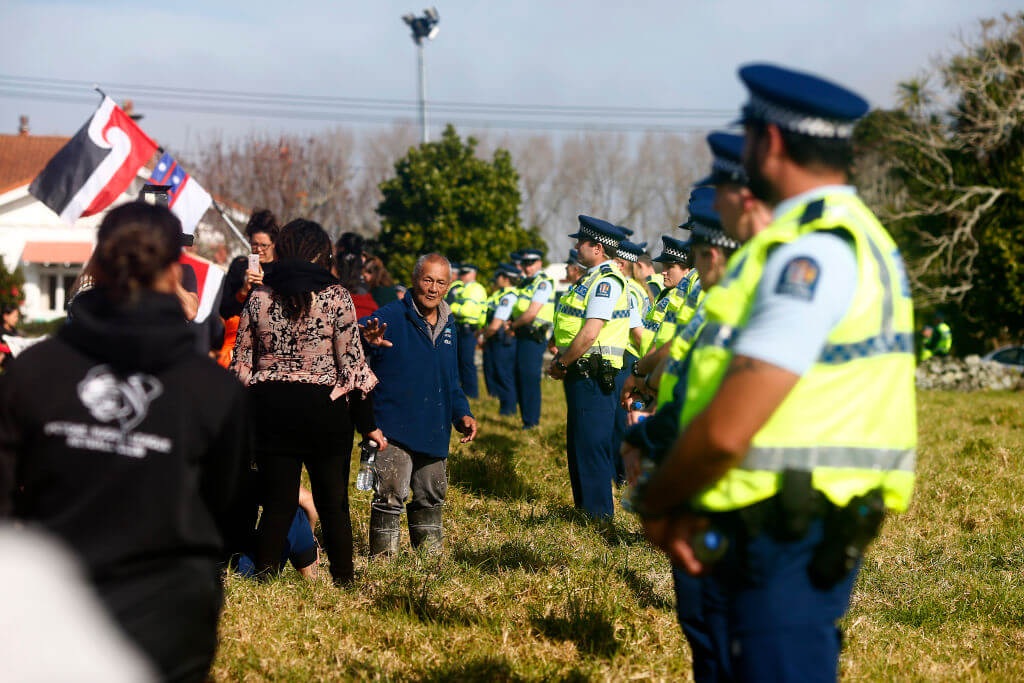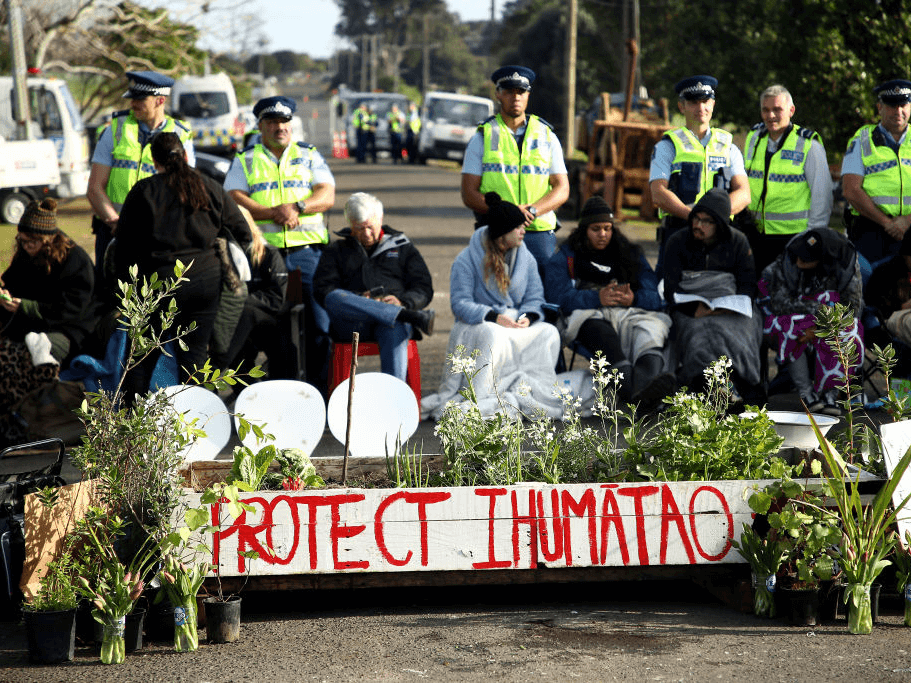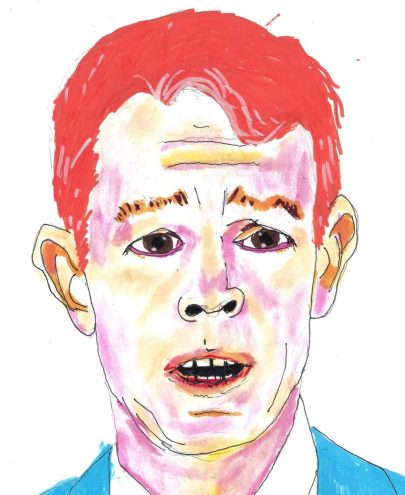Jul 27, 2019 Politics
OPINION: As the occupation at Ihumatao continues, Morgan Godfery asks whether Labour learned the lessons of the foreshore and seabed disaster.
One day a future scientist from the former Auckland isthmus is going to discover a previously unknown cosmic law that made it impossible to build large scale housing in the ancient city’s 21st-century prime. We’re only two years into this government’s first term and Kiwibuild is already a bust. Apartment builds are booming, and borrowing is as cheap as ever, but the city’s car-lovers still prefer their one-story villas and suburban prefabs over a glass box near a public transport hub. And a landmark housing development at Ihumatao, the headland a little north of Auckland Airport, is going the same way as Bastion Point.
It’s impossible to see how even one home in the 480-home development could go up. Depending on who you read and at what time of the day, there are anywhere between 100 and 1000 kaitiaki (or land protectors) occupying the land the council and its owner, Fletcher Building, designate Special Housing Area 62. Busloads more are arriving from Wellington, the Taranaki, and the Bay of Plenty, probably giving the police chiefs at the South Auckland station the shits. Even with 100 officers manning the line how do you force up to 1000 peaceful protesters off the land?
The answer is, well, you don’t. But If Fletcher Building really does intend to enforce their trespass order and develop the land it’s the last option left. The soft power operation went nowhere. The development’s tangata whenua backers – the Te Kawerau a Maki Tribal Authority (TKaM) and the Kingitanga – sent in more than a dozen kaumatua asking the kaitiaki to leave. They left their Kaitiaki Village – the protest stronghold – but didn’t cede the land. Instead hundreds more came. Even with a backroom media campaign and briefings for key Members of Parliament, few opinion-makers or officeholders are coming out on Fletcher Building’s side.

It’s embarrassingly one-sided. Foreshore and seabed hero and former Maori Party co-leader Tariana Turia, Bastion Point leader Joe Hawke, activist and lawyer Annette Sykes, activist and former Mana Movement leader Hone Harawira, academic Jane Kelsey, trade union leaders including Robert Reid and Syd Keepa, former broadcaster and Facebook king Pierre Lyndon, singer and actor Stan Walker, Generation Zero, the Auckland Pride Board, ActionStation, the Migrant and Refugee Rights Campaign, and Peace Action are all in support. Even Pussy Riot, the Russian punk rockers, were on hand in March helping deliver the kaitiaki’s 20,000-signature strong petition calling for a halt to development.
On the other side? Don Brash, probably. And Prime Minister Jacinda Ardern. Kind of. “Ultimately we are falling on the side of the local iwi [who support the housing development] and their position,” she told RNZ. “They are not the ones leading the protest here and so if we come in over the top, it really would be undermining the local iwi in this case.” I say this with love: sorry, nope.
Only one iwi runanga – the TKaM Tribal Authority – backs the development. But the Crown’s own Treaty settlement legislations acknowledge at least three iwi whakapapa to Ihumatao. Do their opinions matter to the Prime Minister? In March, three out the four committee members from the local Marae wrote to Ardern urging her to disestablish Special Housing Area 62. Why are they not “local iwi” too? At the very least four of the five founders from Save Our Unique Landscape (SOUL), the kaitiaki’s central body, whakapapa to Ihumatao as well. Do they not count as the iwi either?
Of course, the Prime Minister is far too smart and sensitive to public opinion to say anything as brazen as “I back Fletcher Building”. But she may as well have. When 100 officers from the government’s constabulary move in to evict kaitiaki from their own land, and as the head of government you told people you’ll sit this one out, that’s as good as taking Fletcher Building’s side. It’s an intolerable position, especially from a Prime Minister who’ll wrap herself in Maori iconography for the international press. Do you take your kahu huruhuru off when you land at Auckland Airport? When the Governor-General said in the Speech from the Throne that your government will work to “honour the original treaty promise” did you have your fingers crossed?
No one is quite ready to admit it, mostly because no one wants Jacinda Ardern to let them down. But this is the Prime Minister’s foreshore and seabed moment. And so far she’s failing. If everything goes to script from 2004 the next step is a Shrek moment, shaking hands with a celebrity ewe in Morrinsville. Either that or you commit to coming in off the bench. Police cannot make a safe and non-violent move against 1000 resistant kaitiaki, and Fletcher Building will struggle to get even one digger or cement truck past the hundred bodies running a moving blockade. Construction workers, if we even get that far, will surely chuck in their tools after running the protest gauntlet each morning.
The only person with the power to break the deadlock is Ardern. But every day she takes a pass the costs in delays to New Zealand’s most important legacy company rise. As we enter the second week in the stand-off the likelihood police overact on camera increases. At some point the political costs, especially in the Maori electorates, will put seats at the 2020 general election in play for the Greens, Maori Party, or Mana Movement. In the end if the Prime Minister acts that’s probably the possibility that’ll really force her hand, remembering of course how close we came to a fourth term National Government if it weren’t for Labour’s Tamati Coffey in Waiariki.

I’m sure a future historian studying hot takes in the internet age will think this is all a tickle (“how wrong he was” etc). Politics is always more complex than “she should just do something, eh”. But one thing I’m confident of is solutions to the deadlock at Ihumatao exist. In February, Fletcher Building said they’d consider “serious” offers to purchase the land. In March, SOUL went through past cases with the Maori Affairs Select Committee where the Crown or local councils made purchases of private land, including at the neighbouring Otuataua Stonefields. In the 1990s, the old Manukau City Council, Auckland Regional Authority, and Department of Conservation snapped up the ancient stone gardens west of SHA62 designating the land a historic reserve. There’s no reason the Crown couldn’t do something similar tomorrow. Willing seller, willing buyer.
It’s wonderfully simple if you think about like that. One of the things that strikes me about the occupation and kaitiaki who are turning up in support and solidarity is so many are children and young people. Their moral clarity is magnificent, and it shames the fence sitters who can’t seem to make up their mind between whether they back building on top of the oldest human settlement in Auckland or if they support preserving it. The best example is Labour’s Maori caucus. The MPs seem to be applying a bystander principle. Some tangata whenua at Ihumatao back the development. Others (many, many others) oppose it. When people disagree who can know the truth?
But this ignores the very reason we elect MPs to Parliament. To take political positions. If we want a mediator we’ll go to a lawyer. The thing I fear, though, is the Maori MPs actually do understand this and their humpty-dumpty-sat-on-a-wall take is preparation for a devastating fall. I’ll concede it’s only telling half the story to say the solution at Ihumatao is simple. Purchasing the land, designating it a reserve of some sort – perhaps carving out a chunk for papakainga housing – and convening a co-management group to care for it is fine. But in a right-leaning Auckland media market, and with an opportunist opposition in Parliament, the politics of it are ugly.
This is the reason Ihumatao is Prime Minister Jacinda Ardern’s foreshore and seabed moment. Sooner or later she must make a choice. Either she comes down on the side of the kaitiaki and her mostly Maori constituents appealing for intervention. Or she comes down on the side of the media opinion-makers, opposition, and mostly Pakeha constituents who would punish her for it. The political calculus is grim, but if anyone can make it work it’s Ardern, the finest communicator and empath of her generation, and the Labour leader who told the country at the 2017 election campaign her and her party had learned the lessons of the foreshore and seabed disaster.
Ihumatao is going to tell us precisely what those lessons learned were.
UPDATE: On the evening of Friday 26 July, subsequent to the publication of this article, PM Jacinda Ardern made the following comments at a media stand up:






